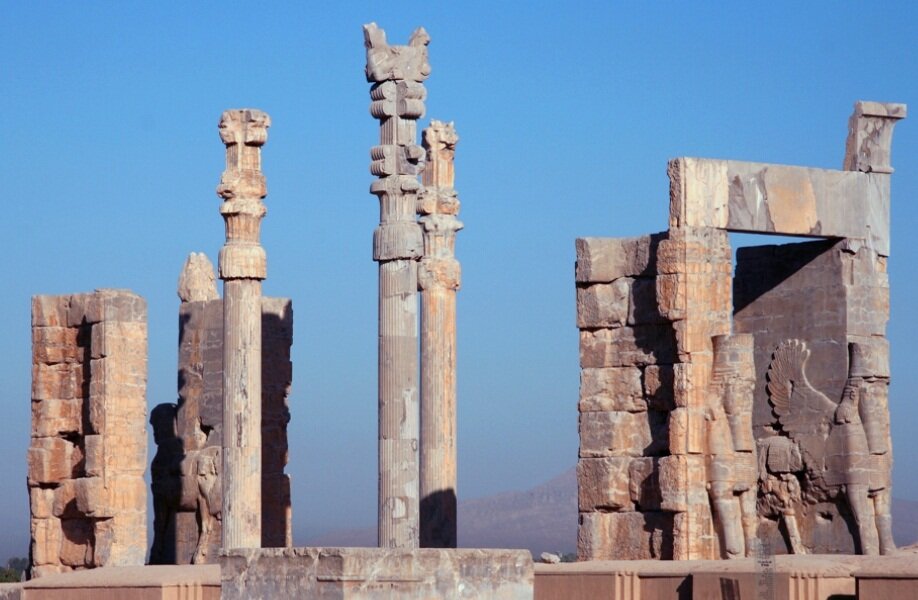Geological expert highlights threats to Achaemenid structures beyond land subsidence

TEHRAN – The head of the Hydrogeology Department at the Geological Survey and Mineral Exploration of Iran has raised concerns about the dual threats facing the prehistorical Achaemenid structures located in the Marvdasht plain, including Persepolis and Naqsh-e Rostam.
Iman Entezam-Soltani said the region has experienced significant land subsidence over the past two years, amounting to 21 centimeters, and is also subject to deep geological fissures that pose a risk to these historically significant sites, ISNA reported on Saturday.
Entezam-Soltani explained that while the core infrastructure of Achaemenid monuments rests on solid bedrock and is thus not directly impacted by soil subsidence, those parts situated on earthen foundations are increasingly vulnerable due to soil subsidence and the resulting fissures.
The Marvdasht plain has experienced noticeable subsidence, particularly in its central areas where [Achaemenid] structures are primarily located, he said. “This phenomenon tends to decrease in areas close to the mountainous regions.”
The expert underlined that cracks form at the intersection of bedrock and soil, posing a particular risk to the structural integrity of sites like Persepolis and Naqsh-e Rostam.
Elsewhere in his remarks, the expert emphasized the role of agricultural practices in exacerbating subsidence issues, particularly in plains where groundwater is extracted for irrigation due to the absence of nearby rivers. “The over-extraction of groundwater in restricted plains, where drilling new wells is prohibited due to the decline in groundwater levels, further aggravates the situation.”
In discussing potential countermeasures, Entezam-Soltani mentioned short-term engineering solutions such as injecting cement into fissures or diverting water from these areas, though these are merely temporary fixes.
He stressed the importance of achieving a water balance in the Marvdasht plain to prevent further subsidence by ensuring that water extraction does not exceed natural replenishment rates. “From 2021 to 2023, the plain experienced between 21 and 25 centimeters of subsidence, contributing to an amount of 100 centimeters from 2014 to 2023.”
Moreover, Alireza Askari Chavardi, director of the World Heritage site of Persepolis, commented, "The soil in Naqsh-e Rostam is unstable, allowing water infiltration to exacerbate subsidence issues."
Naqsh-e Rostam, which literally means “Picture of Rostam”, is named after a mythical Iranian hero which is most celebrated in Shahnameh and Persian mythology. The necropolis embraces four tombs where Persian Achaemenid kings are laid to rest, believed to be those of Darius II, Artaxerxes I, Darius I, and Xerxes I (from left to right facing the cliff), although some historians are still debating this.
Beneath the funerary chambers are dotted with seven Sassanian era (224–651) bas-reliefs cut into the cliff depict vivid scenes of imperial conquests and royal ceremonies; signboards below each relief give a detailed description in English.
At the foot of Naqsh-e Rostam, in the direction of the cliff face, stands a square building known as Ka’beh-ye Zartusht, meaning Kaaba of Zoroaster. The building, which is roughly 12 meters high and 7 meters square, was probably constructed in the first half of the 6th century BC, although it bears a variety of inscriptions from later periods.
The plain of Marvdasht lies to the northeast of Shiraz. It stretches for some 40 km from north to south, and 30 km from west to east.
AM
Leave a Comment